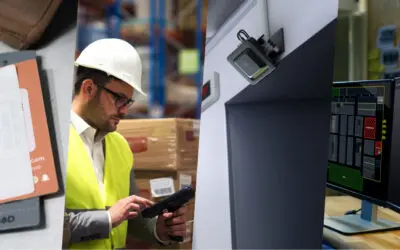10 Tips for a Successful RFID Inventory Management
Whether you’re running a small retail store or managing a million-square-foot distribution center, an RFID inventory management system is one of the easiest ways to sustain a healthy budget for your business. With transparency and visibility into your inventory, the system offers some amazing benefits and features to help you find success.
· Improve the accuracy of inventory orders.
· Be more organized.
· Save time and money.
· Prevent stock shortages.
· Forecast when you need new stock.
· Know the value of your on-site assets.
You just need to know what kind of RFID solution will benefit you the most. To help you out, here are 10 tips for a successful RFID inventory management system.
1. Determine if your product is RFID friendly. RFID utilizes tags that use radio frequency technology. While helpful for tracking most items, some types of products and packaging can present challenges. Working with a qualified systems integration partner can help identify those challenges up front.
2. Figure out which tag or inlay is best for you. Tags come in different sizes and typically the larger the tag, the larger the read range. Also, tags perform differently depending on what kind of product they’re on, i.e., a polo shirt on a hanger vs a new TV with lots of metal interference require different tags.
3. Decide the level at which you’re going to track your inventory. You can track your stock by the pallet, case or individual item. You can even track it on all three levels with the most accurate visibility coming when you track each item individually.
4. Have a set plan and set your expectations. Identify any pitfalls or limitations and find solutions to compensate. MSM Solutions can provided dedicated resources to ensure the success of you project.
5. Understand that RFID isn’t magic. There are limits to RFID and you need to know what you can and cannot do. By partnering with us, we can help you establish reasonable expectations.
6. Identify the key scanning points. Where do you want to capture data? Dock doors, shelves, conveyer belts, etc. This will help you determine the number of fixed or mobile readers you need to do the job right.
7. Identify the right technology for your needs. Will you be using fixed or handheld RFID readers?
8. Test your solution before you implement it. We can send tags and readers out to you so you can mimic the application and know what to expect when you’re live. This will also help you plan for worst-case scenarios and develop contingency plans.
9. Test your inventory against an expected count so you can see if you have a variance – what should be there vs what’s actually there.
10. Check your software operating system to see if there are any integration issues. If you find a problem, PortalTrack can help you manage your inventory and integrates with a variety of ERP and WMS systems.
At MSM Solutions, we know how an RFID management system can transform your business. We should; we’ve been doing this for more than 30 years and manage millions of RFID events every single day.
So if you want to know the best way to implement a successful RFID inventory management solution for your business, give us a call. We know everything you need to know about the RFID technology, software, coverage and best practices.



